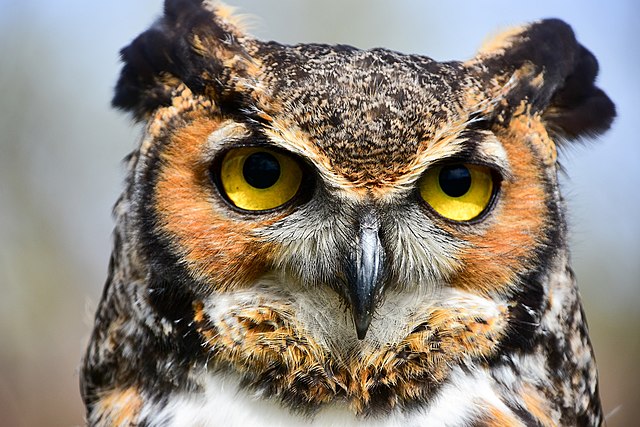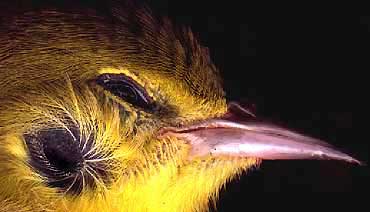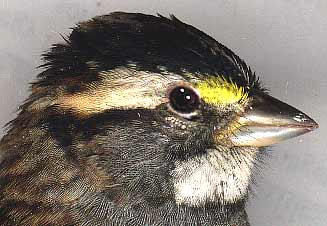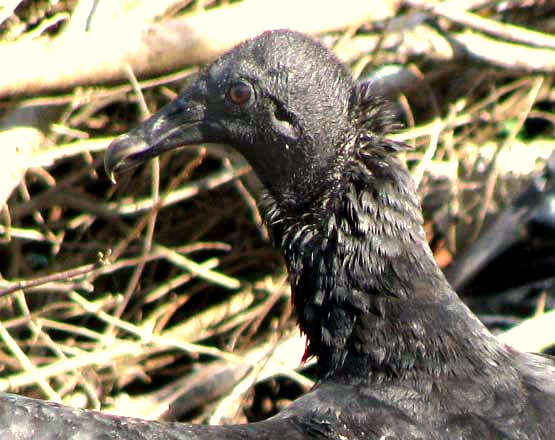 Great Horned Owl, Bubo virginianus; photo by Don Sniegowski, via Wikimedia Commons
Great Horned Owl, Bubo virginianus; photo by Don Sniegowski, via Wikimedia CommonsWhere are a bird's ears? The vast majority of birds appear to have nothing even resembling what we think of as ears. But off course birds hear very well -- on the average about as well as humans.

One summer morning a car-killed, immature, male Pine Warbler, Dendroica pinus, turned up along a road. With appropriate respect for a young life cut short, a search for the bird's ears exposed the ear-hole shown at the left. Note that it's just behind and slightly below the eys, as with most birds.
Why are bird ears so inconspicuous? One reason becomes clear if you've ever tried to carry on a conversation on a windy day, with wind thundering around your ears. Not having ear-flaps is just the price birds pay for being able to hear well as they fly.

Most birds have their ear holes covered with tiny feathers especially well adapted for cutting down on wind noise while permitting sound waves to pass through them. At the right, you can barely see a circular patch of very fine feathers behind and below the eye, where the ear-hole must be. These feathers behave like the foam covers on microphones where puffs of air might otherwise make thumps or thundery sounds.

Some diving birds, such as penguins, have strong feathers covering their ear-holes, to protect delicate inner ears from intense water pressure. The Black Vulture, Coragyps atratus, at the right, with a naturally featherless head (goo would stick to feathers when the head enters decaying carrion), so the ear hole is visible.
The Common Barn-owl can catch a mouse in total darkness, as the mouse scampers across a floor. This implies that not only is the bird hearing very well, but also it's able to pinpoint the sound-maker's exact location.
In 2014, Hans Schnyder and others at Germany's Technische Universität München published a freely downloadable paper with the helpful title, The Avian Head Induces Cues for Sound Localization in Elevation. Schnyder's team found that birds can pinpoint locations by hearing with the help of the shape of their heads. Depending on where sound waves hit the head, they're reflected, absorbed or diffracted, and from certain directions completely screened. Moreover, certain sound waves pass through the bird's head, to the ear on the other side of the head.
With all these cues and others, the bird's brain figures out where things are very well.